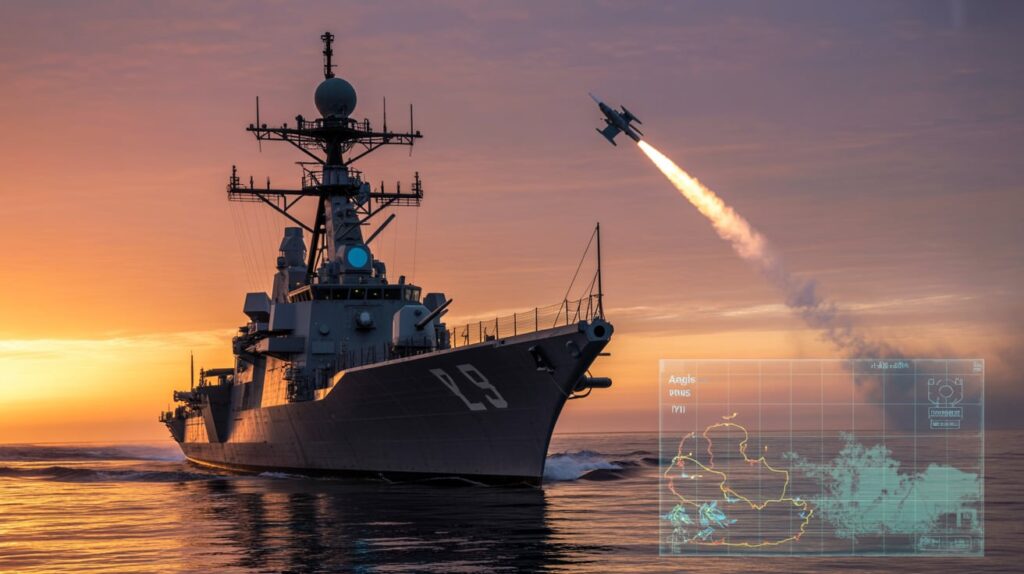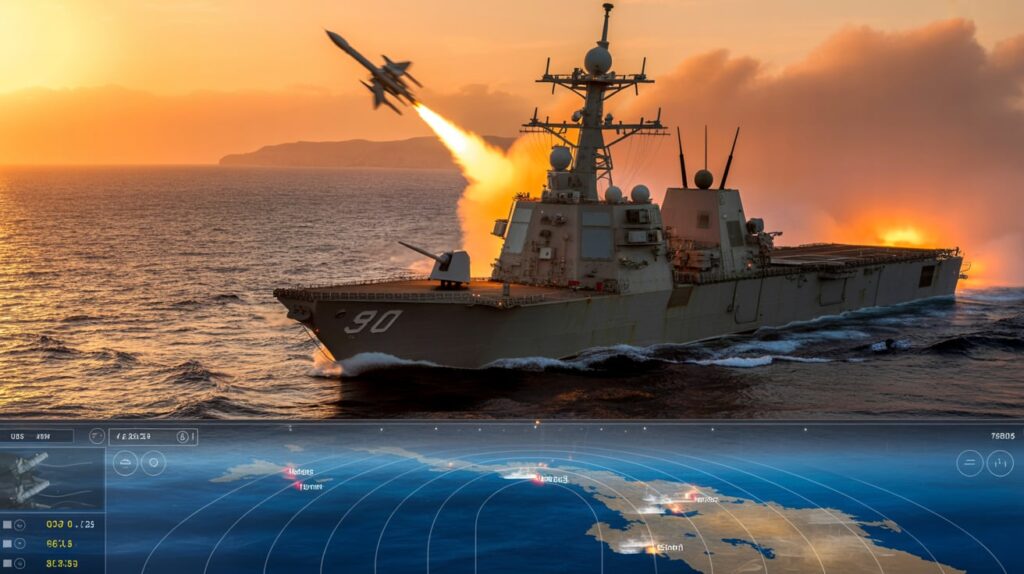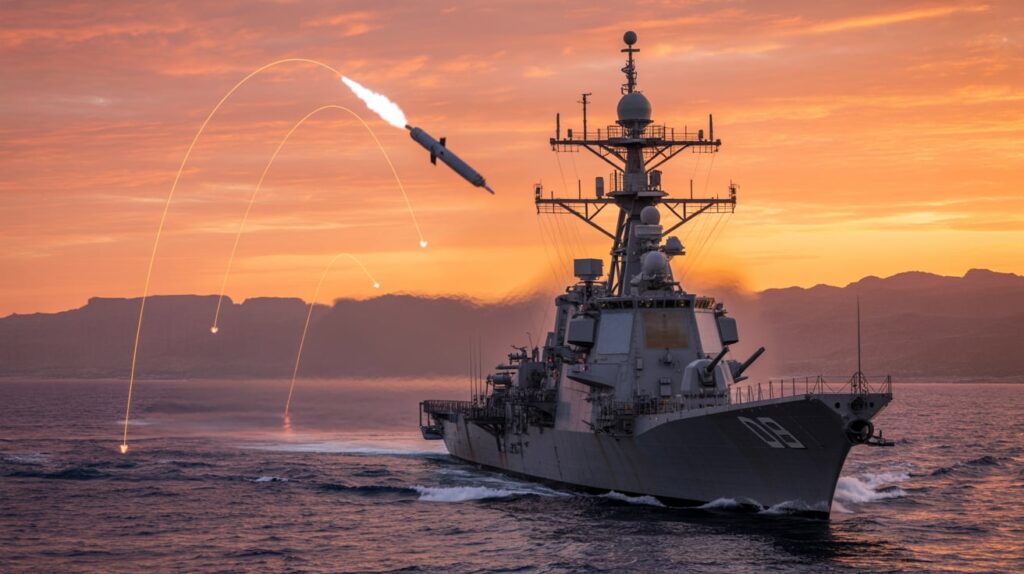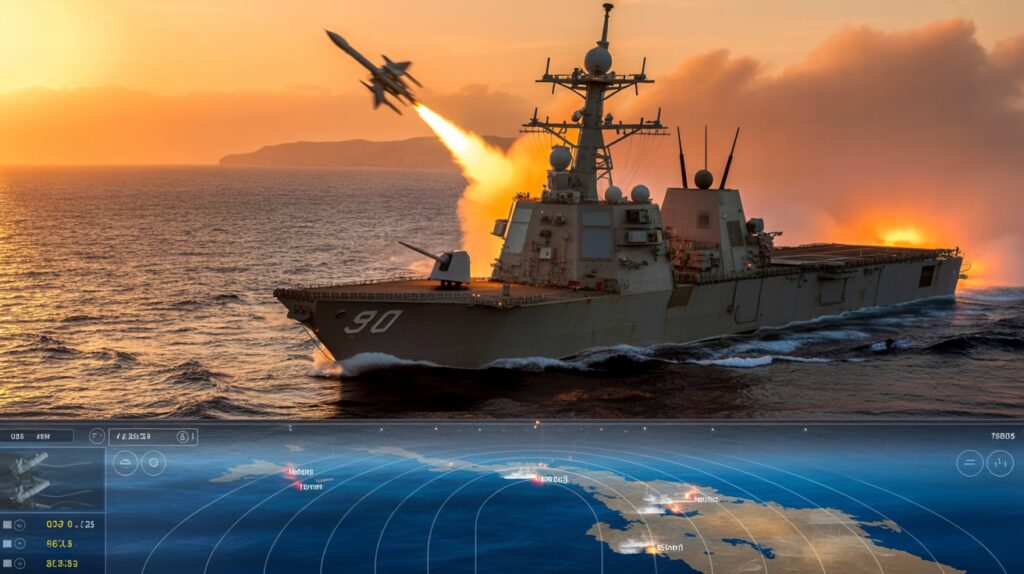America’s grueling battle with the Houthis in the Red Sea has given the U.S. Navy an invaluable preview of what high-intensity, high-tempo air defense operations might look like in a future war — especially one against a more capable adversary like China.

For over a year, U.S. warships have faced a relentless barrage of drone and missile attacks from the Iran-backed Houthis. The Navy’s response has been aggressive and resource-intensive, pushing crews to their limits and forcing planners to rethink everything from missile stockpiles to cost-efficiency in air defense. While the conflict has tested America’s naval resilience, commanders say it’s just a taste of the far more complex and dangerous threat China poses.
A Knife Fight in a Phone Booth — But Just the Beginning
Commander Cameron Ingram, captain of the USS Thomas Hudner, summed up the Red Sea experience in vivid terms: “It’s a knife fight in a phone booth.” Speaking to Business Insider during an underway in the English Channel, Ingram described how the cramped, chaotic geography of the Red Sea — bordered by Yemen, Eritrea, and Saudi Arabia — makes for tense and close-quarter combat scenarios.
But China, he warns, would be a very different battle altogether. “The geography operating that close off of China-controlled territory would be very, very challenging,” he said, noting that a war in the Indo-Pacific would stretch over vast distances, involve advanced surveillance systems, and require the Navy to confront a much more sophisticated arsenal of weaponry.
“Their long-range tracking and intelligence is much more advanced,” Ingram explained. “That environment will have to be fought at a different level.”
A Stress Test for U.S. Naval Defenses
Since October 2023, the Houthis have fired hundreds of missiles and drones toward Israel and international shipping routes in the Red Sea and Gulf of Aden. American destroyers like the Hudner have played a central role in intercepting these threats — sometimes using multimillion-dollar missiles to destroy drones worth only a few thousand dollars.
The scale of this engagement has stressed the Navy’s personnel and drained critical weapons reserves, raising alarm bells in Washington about how prepared the U.S. would be for a larger-scale conflict, especially with a peer adversary like China. That concern is amplified by China’s own massive arsenal of anti-ship cruise and ballistic missiles, which are far more lethal than the Houthis’ rudimentary systems.
The U.S. Navy has long considered China its “pacing threat,” meaning the primary benchmark against which it must measure its readiness. The Red Sea fight has served as a proving ground — one that has both validated current technologies and exposed urgent gaps in capabilities.
Lessons in Firepower, Strategy, and Sustainability
One of the most valuable takeaways from the Red Sea conflict has been the performance of the Aegis Combat System — a computer-and-radar-based weapon platform designed to detect, track, and destroy incoming threats. According to Ingram, the system exceeded expectations with its high success rates in intercepting enemy missiles and drones.
But the fight has also forced the Navy to grapple with difficult strategic trade-offs. Using a $2.1 million Standard Missile-2 to take out a $20,000 drone is simply not sustainable in the long term. “That cost ratio is something we need to get closer to parity,” Ingram admitted.

To address this, the Navy has been experimenting with cheaper alternatives. American fighter jets have begun using precision-guided rockets, and warships are relying more heavily on their five-inch guns, which have larger magazine capacities and lower per-shot costs. “If I can stay in the fight longer by using five-inch rounds, especially against a drone, maybe I should do that,” Ingram said. “Save the high-end missiles for the high-end threats.”
Rearming Challenges and Reloading at Sea
Another operational challenge highlighted by the Red Sea mission is rearming. Currently, U.S. warships must return to port to replenish their missile stocks — a process that takes them out of the fight and potentially leaves gaps in regional security coverage. In the event of a full-scale Pacific conflict, where ports may not be easily accessible or secure, that delay could prove disastrous.
To address this, the Navy is accelerating efforts to develop at-sea reloading capabilities. These innovations could allow destroyers and cruisers to stay on station longer and maintain pressure in a high-tempo combat environment — exactly the kind of endurance that a confrontation with China would demand.
Boosting Confidence — and Deterrence
Despite the wear and tear, the Red Sea conflict has strengthened the Navy’s confidence in its systems and personnel. It’s also been a real-world demonstration of American military effectiveness that may influence China’s own strategic planning.
Ingram called the Red Sea deployment a “resounding air defense success story,” highlighting how the engagements have helped refine tactics, techniques, and procedures for missile defense. The experience is also driving home the importance of munitions management, rapid response coordination, and threat prioritization — lessons that are being integrated into war planning and training exercises across the fleet.
Preparing for a More Dangerous Adversary
While the Red Sea battle has pushed the Navy hard, it remains only a small-scale proxy conflict compared to the scenario commanders envision with China. A confrontation in the Pacific would involve not just more capable missiles, but advanced electronic warfare, cyber operations, submarine threats, and perhaps even space-based assets.

Ingram underscored this: “A war with China wouldn’t be fought at the same level. It would involve engagements over longer ranges, faster decision-making, and far more sophisticated technology. It’s a fight we’d have to approach differently, and we’re using the Red Sea experience to prepare for that.”
The Navy isn’t just building better weapons — it’s also building smarter strategies. The aim is to make sure that, should a great power conflict ever erupt, the United States will be ready not just to survive it — but to win.
As the Navy reflects on 18 months of operations in the Red Sea, it is clear that what began as a regional crisis has become a critical training ground for the future of naval warfare. And if that future includes a clash with China, every missile intercepted, every lesson learned, and every hour at battle stations in the Red Sea may prove to be the margin between victory and defeat.

Conclusion
The Red Sea conflict has proven to be more than just a regional security operation — it has become a crucible for the U.S. Navy, offering vital insights into the realities of modern naval warfare. From testing missile defense systems under pressure to confronting logistical and strategic challenges, the experience has forced the Navy to adapt rapidly and think critically about future threats. While the Houthis have posed a significant challenge, they pale in comparison to the capabilities of China, a far more sophisticated adversary. Yet, this high-tempo, high-stakes environment has given American commanders the opportunity to refine their tactics, stress-test their systems, and better prepare for what a real great-power conflict might look like. The lessons learned in the Red Sea won’t just inform future planning — they may well shape the outcome of the next major naval confrontation.




One thought on “Red Sea Combat Offers U.S. Navy Glimpse Into Future China Conflict”